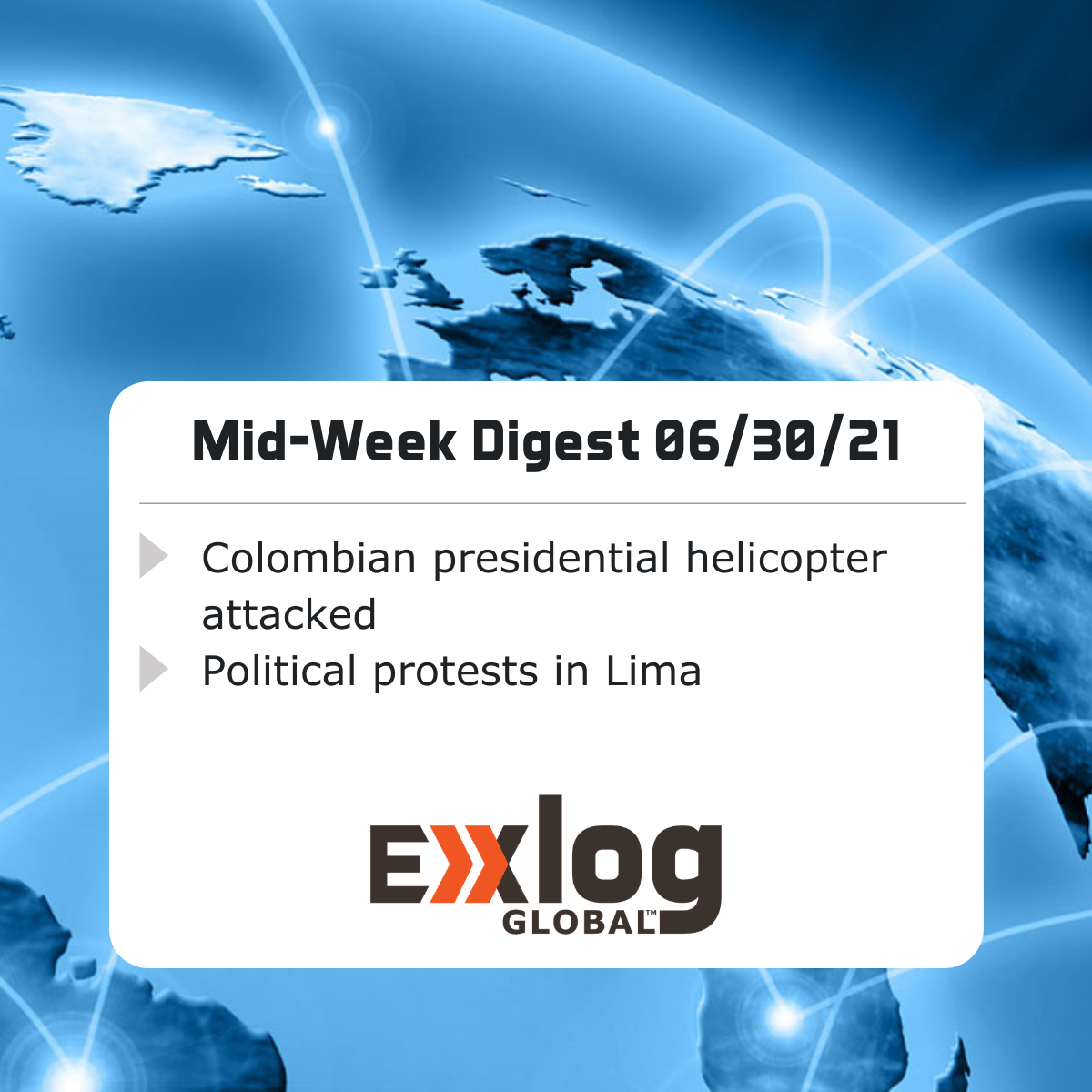Colombian presidential helicopter attacked and Political protests in Lima
Colombia: Attack on presidential helicopter highlights growing violence in eastern border regions
Attacks by armed criminal and rebel groups in Colombia’s eastern border regions have been steadily intensifying over the past year, recently culminating in an attack against Colombian President Ivan Duque’s helicopter as it was traveling in the area. President Duque’s helicopter came under “rifle fire” on Jun. 25 while making its approach to Cúcuta, capital of North Santander department, which sits directly along the Colombian-Venezuelan border. The helicopter—also carrying the Defense and Interior ministers—sustained minimal damage, and no occupants were injured. Following the attack, Colombian police claim to have seized an AK-47 “bearing the mark of the Venezuelan armed forces” after a search of a nearby area – it is unclear if this rifle was used in the attack; already strained relations between the two neighbors could worsen should evidence of Venezuelan involvement come to light.
The attack also marks the second high-profile incident within the city just a month after a car bombing of a nearby military base that injured 36 Colombian troops and US military advisers. The government suspects that the rebel National Liberation Army (ELN) is responsible for the bombing, though the group denies any involvement. Typically, attacks along the border region happen in much more rural areas, especially in the coca-rich Catatumbo region, where the ELN and organized drug gangs are known to operate. The recent events not only suggest that these groups may be becoming emboldened to strike more urban targets but highlights the growing violence in the region as a whole. There have been three separate armed attacks across the country since the helicopter attack, killing a total of nine people – including four police officers. The attacks bring the total number of “massacres”—incidents that result in 3+ deaths—to 45 in 2021, compared to 90 total in 2020, suggesting an upward trend of violence.
Peru: Protesters take to the streets over presidential election stalemate
Thousands of Peruvians protested throughout Lima in support of candidates Pedro Castillo and Keiko Fujimori on Jun. 26 as the country’s polarized presidential election continues to be legally challenged nearly three weeks after the vote. A preliminary count indicates that socialist candidate Pedro Castillo holds a narrow 44,000 vote lead over right-wing Fujimori. Fujimori and her Fuerza Popular party have claimed the election was marred by fraud and have filed hundreds of challenges against 200,000 votes in rural areas heavily won by Castillo. Despite calls from Fujimori for the Organization of American States (OAS) to audit the electoral process, the OAS, EU, and several other international observers have already deemed the elections to be free and fair. However, the country’s internal audit by the National Elections Jury (JNE) faced a setback this week after one of four officials resigned over perceived biases in requests to nullify votes – the official has since been replaced. In anticipation of Castillo’s victory, several Fujimori backers—including conservative newspaper El Comercio—have begun to distance themselves from her challenges, which have been fruitless so far. The ongoing legal drama has culminated in growing tensions among the electorate, leading both sides to take their grievances to the capital’s streets to protest the ongoing stalemate. The demonstrations have remained peaceful thus far, largely in part to security forces’ efforts to keep both parties separated. However, continued delays in the audit process are likely to exacerbate rising tensions, which have the potential to boil over into violent unrest in the near term.


